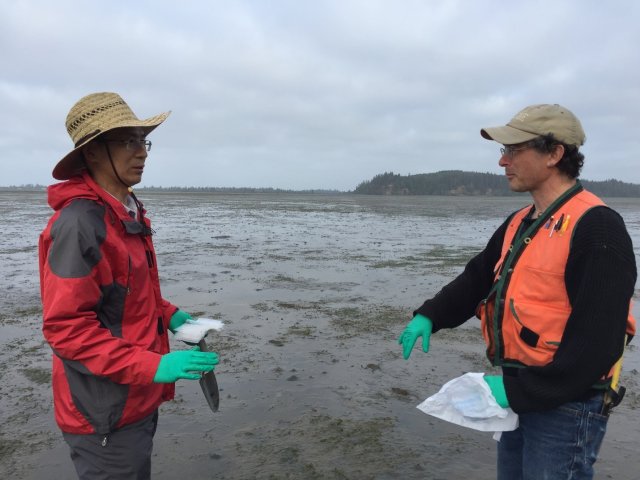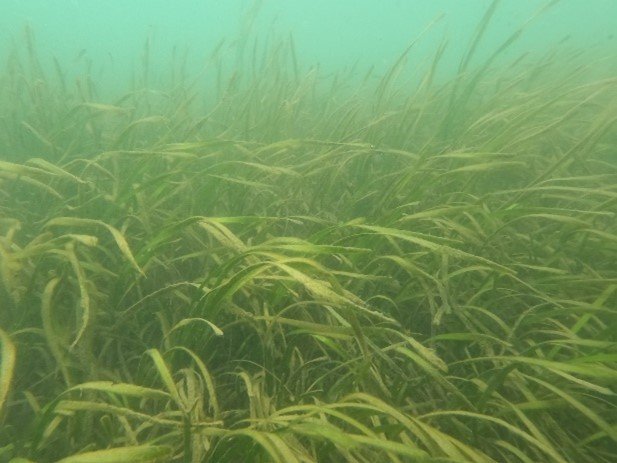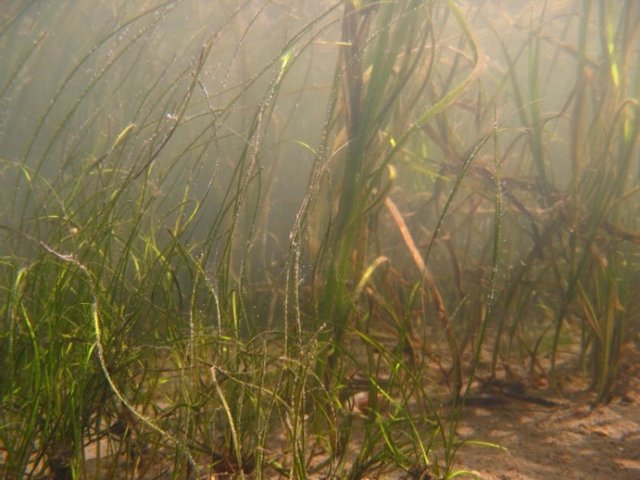Studying Marine Ecosystems at the Ocean Basin Scale: Success Through Collaboration

Published February 21, 2024
Marine ecosystems are data poor compared to terrestrial counterparts. Conducting studies in the marine environment can be challenging because researchers are sampling or making measurements underwater, and sampling is often constrained by tidal cycles and seasons. As a result, basic ecological questions remain for many organisms, habitats, and biogeochemical processes and there are relatively few large-scale comparison studies, especially those that look at patterns across ocean basins and how human activities may have altered environmental processes and organism transport.
Seagrasses are marine flowering plants that live in shallow waters and are critical to estuaries. Seagrasses can be used as “sentinel species” that indicate ecosystem health because they integrate the surrounding environmental conditions into their biology and physiology over long periods of time. Approximately, 90% of fisheries species use estuarine habitats, including seagrass, during their life cycle. These plants are critically important as food and habitat as well as for binding sediments, removing nutrients, and are an important sink for atmospheric carbon dioxide (aka “Blue Carbon”).
Unfortunately, these critical habitats have been experiencing worldwide degradation for decades, particularly from anthropogenic eutrophication. Eutrophication happens when excessive nutrients enter a system, stimulating an overabundance of algal growth resulting in system degradation such as loss of seagrass, harmful algal blooms (HABs), low oxygen, fish kills, etc. Further, human activities such as trans-oceanic shipping can contribute to biological invasions with consequences for native ecosystems. Understanding the role of human impacts on these foundational species is critical to ecosystem conservation and resource management globally.

In 2016, EPA’s Dr. Jim Kaldy was approached by colleagues at the Chinese Academy of Sciences in Qingdao, China, about collaborating on seagrass research. The researchers were interested in comparing Zostera marina (eelgrass) and Zostera japonica (Japanese eelgrass) from Asia and North America. In 2017, Dr. Kaldy invited Dr. Yi Zhou and his colleagues Dr. Xiaomei Zhang and Dr. Shaochun Xu to visit North America and sample both Z. marina & Z. japonica. In these studies, the researchers were interested in the heavy metals concentrations in eelgrass (Z. marina) and the genetic composition of Japanese eelgrass (Z. japonica) in its native and non-native distribution range. They worked with partners including Padilla Bay National Estuarine Research Reserve (NERR), Washington Dept. of Ecology, South Slough NERR, Oregon Dept. of State Lands, and California Fish and Game to secure access to seagrass beds and appropriate sampling permits. During the summer of 2017, they collected seagrass samples from five estuaries in Washington, three Oregon estuaries, and Humboldt Bay, California. The samples complimented sampling that was conducted in China, Japan, and Korea. This small team analyzed over 1000 samples of Z. japonica for genetic markers and hundreds of samples of Z. marina for metals concentrations.

This international collaboration between the EPA, Chinese Academy of Sciences, Korean, and Japanese researchers led to significant scientific advancements about these critical estuarine habitats and culminated with two publications. The research on the genetics of Z. japonica concluded that in its native range, this plant exhibits a deep genetic divergence. This divergence resulted in the differentiation of unique northern and southern populations separated by the Yangtze River, a well-established biogeographical boundary. Further, the source of the non-native Z. japonica populations in North America was identified as a mixture of at least two populations from Central Japan. This finding corroborates a long-held theory that the species was introduced multiple times to North America with seed oyster imports and secondarily spread by waterfowl. This work supports the conservation of Z. japonica which is endangered in Asia. The research on heavy metals in Zostera marina populations across the North Pacific Ocean indicates that there are different metal delivery processes occurring in different regions of the Ocean. In the Asian study sites, metals in eelgrass appear to be related to industrial activities, while eelgrass metals concentrations in North America were more influenced by natural processes such as oceanic transport and rock weathering.
Further, this work highlights the need for additional research on toxic thresholds of heavy metals, when metals accumulated in the tissues negatively impact the plant physiology in these foundation species that support critical fisheries.
Through collaborations such as these, we can address how large-scale drivers such as climate change influence important marine ecosystems at ocean basin scales and how these changes vary in space and time.
This article was written by EPA’s James Kaldy, Ph.D.
Xu, S., Kaldy, J.E., Zhang, X., Yue, S., Suonan, Z., Zhou, Y. 2024. Comparison of metals in eelgrass (Zostera marina L.) and the environment across the North Pacific Ocean: Environmental processes drive source delivery. Environmental Pollution 343. 10.1016/j.envpol.2023.123096
Zhang,X., Li, Y.L., Kaldy, J.E., Suonan, Z., Komatsu, T., Xu, S., Xu, M., Wang, F., Liu, P., Liu, X., Yue, S., Zhang, Y., Lee, K.S., Liu, J.X., Zhou, Y. 2023. Population genetic patterns across the native and invasive range of a widely distributed seagrass: Phylogeographic structure, invasive history and conservation implications. Diversity and Distributions. 10.1111/ddi.13803
